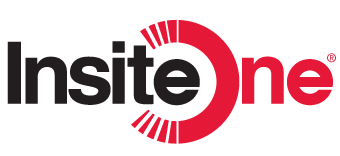What’s Old is New Again: The Resurgence of the RIS
By Doug Rufer, BSBA, RT(R)

Introduction
What’s old is new again as the resurgence of the RIS is making a comeback. RIS stands for Radiology Information System, once a critical information management solution for busy radiology departments in the 1990s. Then, around 2010 organizations began to adopt electronic health record systems (EHRs) and stand-alone RIS solutions began to be phased out. EHRs had their own RIS capabilities as part of their core offering. This enticed CIOs to consolidate their IT systems with a single vendor (instead of best-of-breed) causing the trend to shift away from best-of-breed solutions.
The downside was EHR based RIS solutions were typically less robust than best-of-breed solutions. Organizations lost useful functionality and optimized workflows. This required re-engineering of established workflows to accommodate the new EHR based RIS.
Being involved with RIS throughout my career, I’ve watched this up and down trend take place. However, I now find it interesting that the market growth predictions for RIS was on a decline years ago but is now enjoying a resurgence. This started in the early 2020s making best-of-breed RIS solutions popular again. Organizations need better ways to cope with staff shortages and new technology is clashing with outdated workflows, providing an opportunity for RIS to make a comeback. Today, there are multiple vendors that provide best-of-breed RIS solutions offering enhanced workflow tools that can positively impact radiology departments everywhere.
What is a RIS Anyway?
A RIS is a software suite of networked workflow and administrative tools used to manage the entire patient journey within a radiology department or imaging practice. A RIS manages everything from patient scheduling, order management, patient tracking, technologist documentation, file management (in the old days, patient jackets with hard copy films were stored and moved to various storage locations based on an age out methodology), inventory tracking, exam statuses, radiology reporting, report generation, and report distribution. Some manage the billing process or front-end eligibility checking, along with other unique workflows, like patient engagement solutions, peer review, and follow-up management, as a few examples. Today’s RIS no longer need to manage where films are stored, as PACS (Picture Archival Communication Systems) has taken that under control since most images are now digital.
There are multiple vendors that provide RIS solutions, and they all have their own unique benefits. RIS solutions are provided as on-premises or cloud-based solutions, and some are focused on departmental workflows while others bring in workflows to manage the complexities of teleradiology. A while back, there was a lot of debate around how a RIS should work with a PACS. A RIS could be implemented as a stand-alone solution and interfaced with a PACS, or they could be a single database integrated RIS/PACS solution. This created the debate of which was better, PACS driven workflow or RIS driven workflow. Realistically, the best choice really comes down to the requirements of the organization and the workflows they are taking advantage of.
Key Benefits of a Modern RIS
Consider your RIS as a radiology specific patient record and management system. Not only will this database system track and maintain your patient histories, but you will also use it to manage your department. One of the key reasons most imaging organizations opt for a RIS over an EHR is the specific workflows designed within the RIS to improve workflow efficiencies and patient throughput. Streamlining tasks is a key benefit that RIS solutions provide. When patients check in at your front desk, alerts (offered as notifications or color changes in technologist worklists) inform the tech that their next patient is here, filling out paperwork, and when they are ready for their exam. This eliminates back-and-forth calls from the front desk to notify the technologist the patient is ready for their exam.
Another workflow ability is to inject a QC process once images are acquired and sent from the modality to the PACS. Technologists can keep radiologists from reading a study until it is completed (such as adding 3D reconstruction images, for example) and all images are available. They can update the status at that time, which places the study with all available images on the radiologist worklist.
A RIS offers the benefit of improving data integrity throughout the workflow process. In hospital-based workflows, patient data will flow from the EHR into the RIS via HL7. From the RIS, the modality will query the RIS for scheduled or ordered studies and update the modality worklist with patient data. This electronic movement of data prevents data duplication or mis keying of information due to repetitive typing.
Improved efficiency helps improve revenue and profitability. Today’s RIS solutions offer robust data analytics and reporting capabilities so you can monitor departmental performance month over month and year over year. Having insight to your workflow operations, throughput capabilities, exam counts, top referrers, and other key metrics, provides insight to your operations so proper adjustments can be made to keep your department running at peak performance. Understanding who your top referring physicians are allows you to focus additional marketing efforts to those physicians to maintain or increase referrals while offering them tools that provide a competitive advantage for using your imaging services.
Finally, improving efficiency, better information tracking, enhanced patient documentation, and information sharing provide the keys to improving patient care. When radiologists have all the information they need on a patient’s condition (including new information that may have been captured during their pre-exam interview process), the accuracy of their interpretation and recommendations they provide of their findings can be shared with the patient’s referring physician, and this can definitely enhance patient care in the long run.
Future Trend Predictions
As the imaging market continues to evolve, there are significant opportunities for RIS systems to evolve and continue to provide value in the patient care process. A few areas where there are opportunities for RIS solutions to provide innovations include artificial intelligence, patient engagement, follow-up workflows, and real-time analytics.
Artificial Intelligence
Machine Learning (ML) and Artificial Intelligence (AI) are making significant headway in providing advanced tools to improve the diagnostic interpretation process. But AI and ML can also add enhanced workflow capabilities to the RIS and streamline processes by removing human intervention (speeding processes and time to diagnosis or improve report turn-around times).
For example, AI in a RIS could detect if there was a discrepancy in the patient’s history vs. the exam that was ordered and alert a radiologist to review the case prior to performing an inappropriate or wrong study. AI early in the scheduling process could help balance patient scheduling and open timeslots based on denials or patients that tend to be frequent no-shows, allowing for departments to better manage their schedule to keep revenue flowing.
Patient Engagement
Patient engagement solutions give more control to the patient over their care. Providing tools to allow self-scheduling can be simplified to show only timeslots available yet keep the complexities of the scheduling process behind the scenes. Once the exam is complete, providing easy tools to download or share images, access reports, request appointments, and send timely reminders with exam prep instructions are all ways a RIS can improve the patient experience.
Follow-up Workflow Automations
Not following through on exams that require follow-up is a large revenue loss for many organizations. AI could determine from the radiology report that a follow-up procedure is necessary. The AI could prompt the referring physician to create the order for the follow-up procedure. The AI could help close the loop and ensure that the referring physician has indeed sent the order for the follow-up, the insurance company was notified for the follow-up, and the patient engagement system was notified to ping the patient to schedule the exam. Timely on-going reminders can help ensure they show up for the study once the exam date approaches.
Closing the loop on exam follow-up can bring a higher revenue stream to most organizations since procedure follow-up often doesn’t have a well-defined closed loop workflow.
Real-Time Analytics
Imagine your RIS being able to analyze everything in your department and making real-time adjustments to the schedule while notifying the patients in the waiting room that their study will be moved up or slightly back due to backups in the department. AI could analyze the inbound reading workflow for radiologists and determine if the number of available radiologists can keep up with the current workload while maintaining service level requirements that may be set by various physician or organizational contracts. Auto adjusting the worklists while offloading excess studies to a contracted teleradiology firm, can keep patients, referring physicians, and department managers happy since timely report turn-around would continue regardless of workload.
AI can provide updates to managers as data is captured real time and inform them of automated changes being made to improve the workflow of the department, all while focusing on efficiency.
Conclusion
Radiology Information Systems were once written off as a dying technology that would be replaced by the EHR. Time has proven that incorrect as a resurgence in the technology and the value it brings in improving efficiency and workflow is well understood.
Today’s RIS solutions offer more options to improve workflows, better department insights and analytics, and new capabilities and automations from artificial intelligence that can improve efficiency and optimize patient care. If you are looking for a next generation Radiology Information System for your organization, be sure to check out InsiteOne’s modern cloud native RIS and the workflow optimization capabilities it provides our customers every day.




